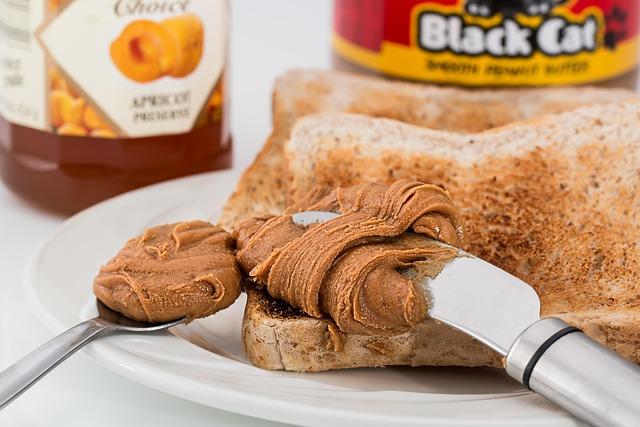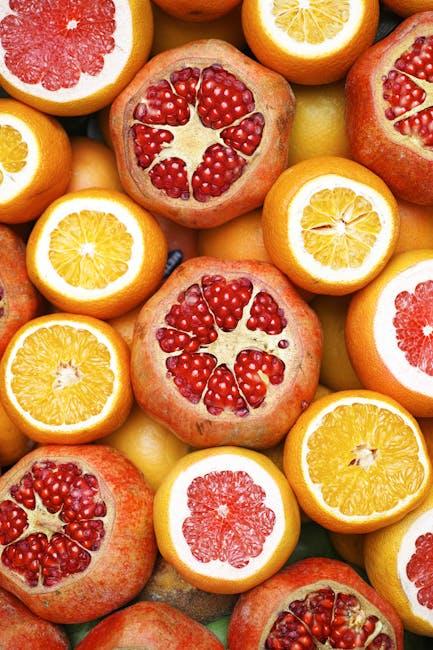In the realm of nutrition, fats frequently enough find themselves in the limelight, drawing both admiration and skepticism. Among the many contenders,grass-fed butter has emerged as a beloved staple for those seeking a more wholesome alternative to its conventional counterpart. But what truly sets grass-fed butter apart lies not only in its rich, creamy flavour but also in its remarkable nutritional profile, particularly its levels of Vitamin K2 and Conjugated Linoleic Acid (CLA). As health enthusiasts continue to explore the benefits of natural foods, understanding the unique properties and contributions of grass-fed butter becomes essential. In this article,we will delve into the nutritional analysis of grass-fed butter,spotlighting the roles of Vitamin K2 and CLA,and uncover the potential health benefits that make this dairy delight a worthy addition to your culinary repertoire. Join us on this journey through the buttery landscape of nutrition, where each scoop may hold more than meets the eye.
Grass-Fed Butter Unveiled: A Deep Dive into Nutritional Benefits
Grass-fed butter stands out in the realm of dietary fats, boasting a rich profile of essential nutrients that can considerably enhance health.One of the most noteworthy components is Vitamin K2, a fat-soluble nutrient found in abundance in the fats of grass-fed dairy products. K2 plays a vital role in supporting bone health by aiding in calcium metabolism,ensuring that this crucial mineral is properly utilized in the body. Moreover, Vitamin K2 has been linked to cardiovascular health, as it helps to prevent arterial calcification, potentially reducing the risk of heart disease.
Another impressive feature of grass-fed butter is its high concentration of Conjugated Linoleic Acid (CLA). This unique fatty acid has gained popularity for its potential health benefits, which include promoting healthy body composition and aiding in fat loss. Studies suggest that the presence of CLA in the diet may enhance insulin sensitivity and support immune functions. The nutritional benefits of grass-fed butter can be summarized as follows:
- Rich in Vitamin K2 – Essential for bone and heart health.
- High in CLA – Supports fat loss and body composition.
- Source of Omega-3 Fatty acids – Contributes to overall heart health.
- Contains Butyrate – Beneficial for gut health.
| Nutrient | Content per 100g |
|---|---|
| Vitamin K2 | 20.0 mcg |
| CLA | 0.6 – 1.5 g |
| Omega-3 Fatty Acids | 0.9 g |
| Butyrate | 4.3 g |

The Role of Vitamin K2: Enhancing Bone Health and Beyond
Vitamin K2, a lesser-known but critical nutrient, plays an essential role in enhancing bone health through its interaction with calcium metabolism. It supports the activity of osteocalcin,a protein that binds calcium to the bone matrix,thereby increasing bone mineral density. Notably, this vitamin also helps direct calcium to the bones and teeth instead of allowing it to accumulate in the arteries, which can lead to vascular calcification.Consuming foods rich in Vitamin K2, such as grass-fed butter, can significantly contribute to stronger bones and potentially reduce the risk of fractures.
Beyond its skeletal benefits, vitamin K2 has been linked to various health advantages, making it a vital component of a balanced diet. It is thought to support cardiovascular health by promoting proper calcium utilization in the body. Additionally, emerging research indicates that K2 may have a role in reducing inflammation and managing insulin sensitivity, which can contribute to overall wellness. Including sources of this nutrient in your diet can ensure that your body functions optimally while preserving your bone health for years to come.
| Nutrient | Health Benefits |
|---|---|
| vitamin K2 | Enhances bone health, supports heart function, may reduce inflammation |
| CLA (Conjugated Linoleic Acid) | May aid in fat loss, improve body composition, boost immune function |

understanding CLA: The Potential of Conjugated Linoleic Acid in Your Diet
Conjugated Linoleic Acid (CLA) is gaining attention for its potential health benefits, particularly in the realm of weight management and metabolic health. Found predominantly in grass-fed dairy products like butter, this fatty acid offers a unique profile that sets it apart from other dietary fats.Research suggests that incorporating CLA into your diet may help in reducing body fat,enhancing lean muscle mass,and even supporting cardiovascular health. Additionally, the presence of CLA in grass-fed butter is not only a tasty way to enjoy its benefits but also ensures that you’re consuming a source rich in nutrients.
One key advantage of consuming grass-fed butter is its impressive CLA concentration, which can vary based on the animal’s diet and overall health. Here’s a breakdown of the benefits of adding CLA-rich foods to your daily intake:
- Weight Management: May help in reducing body fat while preserving muscle tissue.
- Metabolic Boost: Can enhance metabolism and improve insulin sensitivity.
- Anti-Inflammatory Properties: Potentially reduces the risk of chronic diseases.
| Food Item | CLA Content (grams per 100g) |
|---|---|
| Grass-Fed Butter | 0.5 - 5.0 |
| Conventional Butter | 0.2 - 1.0 |

Choosing the Best Butter: Tips for Maximizing Nutritional Value
When selecting butter for its nutritional benefits, grass-fed butter stands out for its superior content of essential nutrients, particularly vitamins and fatty acids. The diet of grass-fed cows significantly influences the composition of their milk, yielding butter that contains higher levels of Vitamin K2 and Conjugated Linoleic acid (CLA). These nutrients not only support bone health but also contribute to metabolic efficiency and may even bolster immune function. To ensure you are getting the most out of your butter, consider the following factors:
- Source of Dairy – Opt for butter labeled as grass-fed; this ensures the cows were grazed on pasture.
- color – Richer yellow tones often indicate higher levels of beta-carotene, which links to better nutritional quality.
- Packaging – Choose organic options to reduce exposure to pesticides and hormones.
the differences in nutritional profiles can be significant, as shown in the table below. Understanding the specific benefits that grass-fed butter offers can help consumers make informed choices that align with their health goals:
| Nutrient | Conventional Butter | Grass-Fed Butter |
|---|---|---|
| vitamin K2 (mcg per 100g) | 5 | 20 |
| CLA (g per 100g) | 0.5 | 1.5 |
| Omega-3 Fatty Acids (mg per 100g) | 200 | 500 |
Integrating grass-fed butter into your diet can elevate not just the flavor of your dishes, but also their nutritional content. By concentrating on these details and choosing high-quality options, you can maximize the health benefits that butter can offer while enjoying this versatile ingredient.
Key Takeaways
the exploration of grass-fed butter reveals a rich tapestry of nutrients, particularly the notable presence of Vitamin K2 and Conjugated Linoleic Acid (CLA). As we increasingly seek to understand the intricate roles of these compounds in our diets, grass-fed butter emerges not just as a flavorful alternative but as a nutrient-dense option worth considering. Whether you’re a culinary enthusiast, a nutrition aficionado, or simply curious about how your food choices impact your health, incorporating grass-fed butter into your lifestyle may offer a beneficial boost. By embracing the knowledge of what’s in our food, we empower ourselves to make informed dietary choices that resonate with our health goals. As the research continues to unfold, one thing remains clear: the buttery goodness of grass-fed options can provide more than just flavor; it invites us to nourish ourselves thoughtfully and enjoyably.






